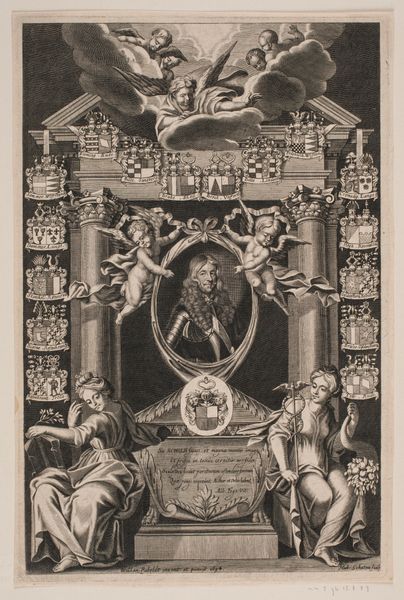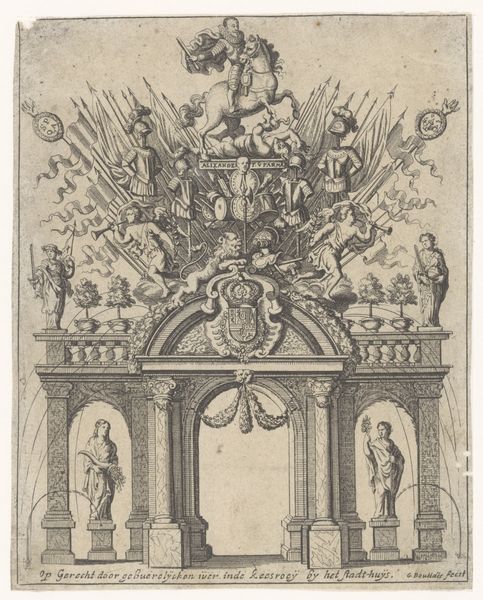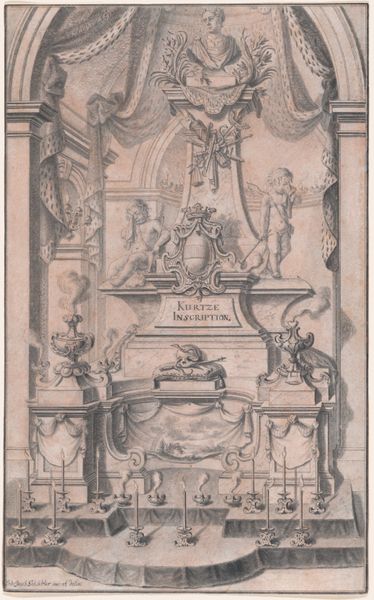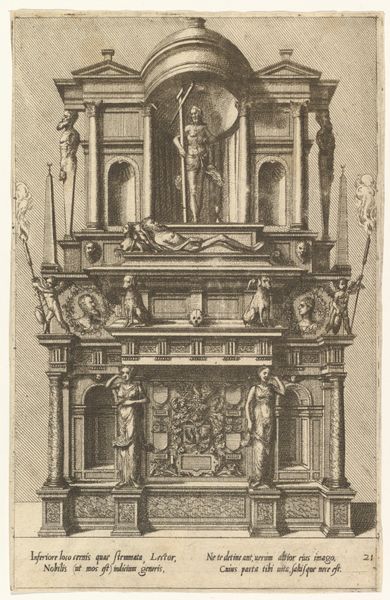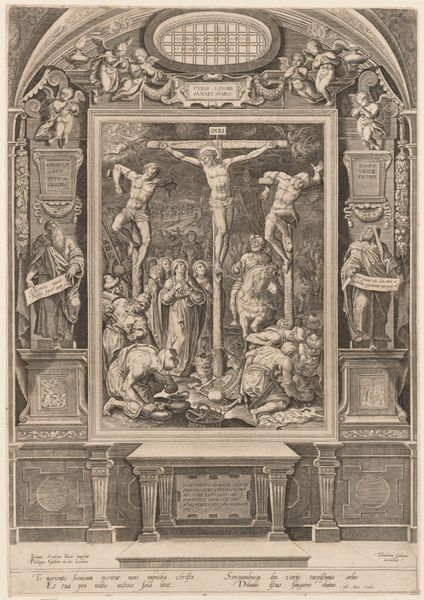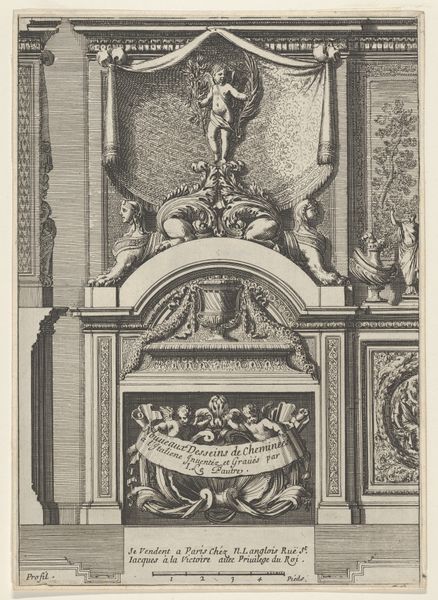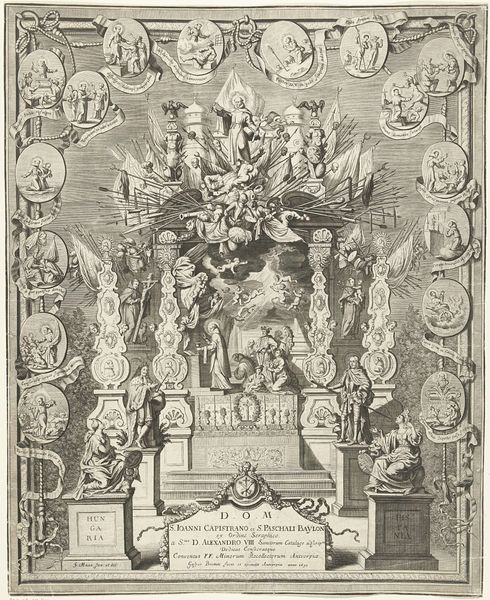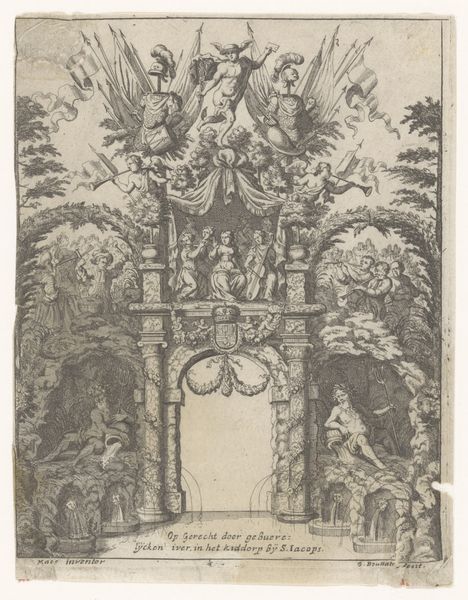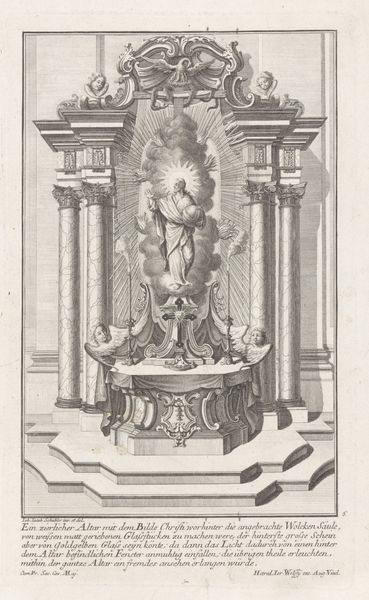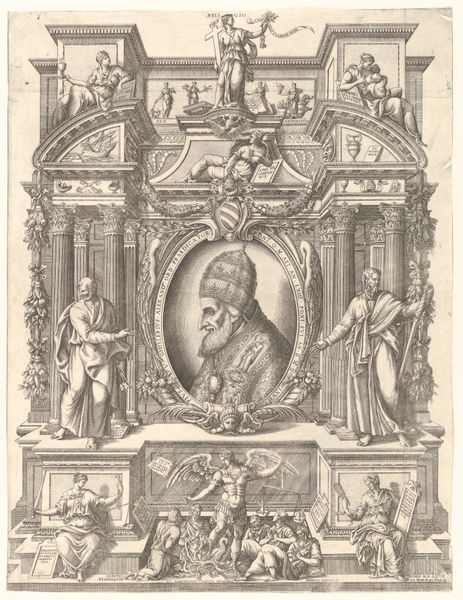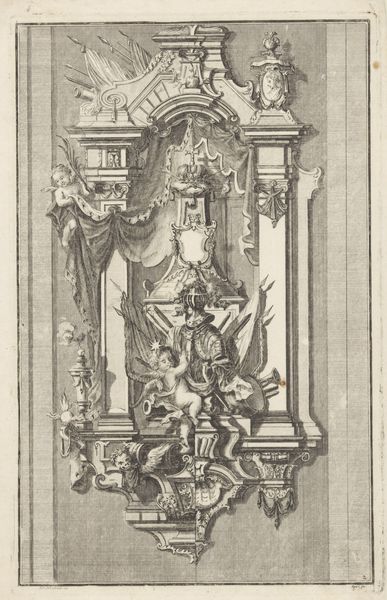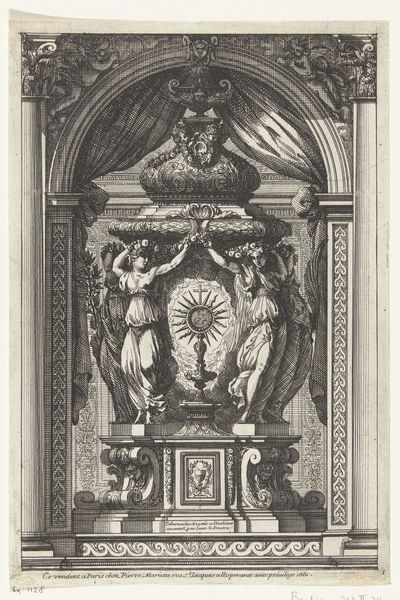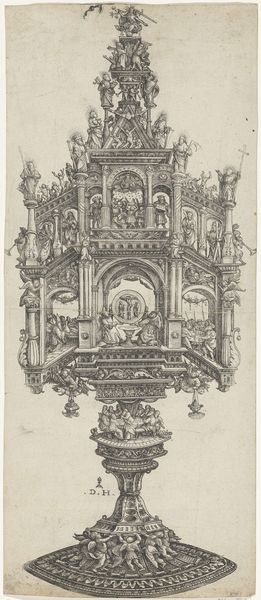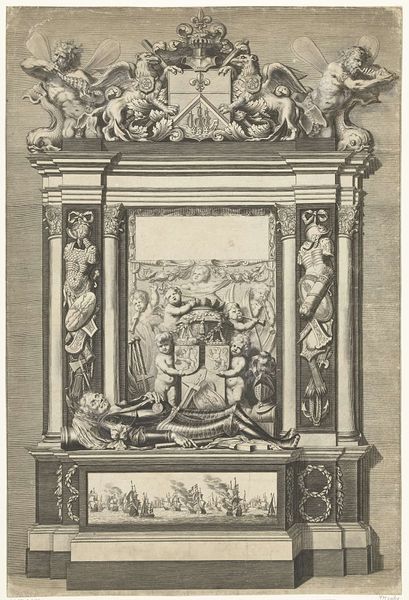
drawing, print, engraving
#
drawing
#
allegory
# print
#
old engraving style
#
mannerism
#
figuration
#
vanitas
#
line
#
history-painting
#
italian-renaissance
#
engraving
Dimensions: Sheet (Trimmed): 20 9/16 × 14 15/16 in. (52.3 × 38 cm)
Copyright: Public Domain
Curator: Bernardino Passeri’s "Allegory of the end of man's life," created in 1589, certainly offers a stark visual representation. Editor: Yes, stark is a fitting word. The intense detail almost overwhelms; the contrasting imagery—angels and what appears to be tormented souls—it’s quite unsettling. Curator: That tension is masterfully rendered through line and form. Notice the pronounced use of linear perspective, creating depth while also compartmentalizing the composition into distinct realms: the earthly and the divine. Editor: It reminds me of morality plays popular during the Italian Renaissance. Considering the cultural context, this work appears to be a direct reflection of the anxieties of death and salvation prevalent during the Counter-Reformation. What message might Passeri be conveying, specifically, through the inclusion of historical or mythological figures? Curator: Such allusions are not explicitly present here. Instead, Passeri builds a system of contrasting elements – the heavenly figures balanced by the torments depicted at the sides. This opposition creates a binary; life and death. Editor: Right. And isn’t it curious how central death is to society's imagination, really? Prints like this played a significant role in how people confronted mortality but also internalized its representation. How would seeing an image like this affect someone attending mass or simply in their home during the period? Curator: We can analyze how the allegorical imagery invites introspection; we become participants contemplating the human condition. There’s an implied universality in the narrative – a journey everyone must take. Editor: Precisely. Passeri captured an emotional crossroad, presenting questions of faith, morality, and eternal consequences, effectively making each viewer examine the potential end and larger meaning. It’s art as public instruction. Curator: Agreed. Looking closer now I see how skillfully he uses the limited medium of engraving to evoke texture. The ethereal figures are rendered using a more delicate line than the chaotic fires on either side. Editor: It gives tangible form to something usually only experienced at arm’s length, helping society reckon with mortality through a piece of art. Curator: Precisely. By examining it, both through line and historical understanding, we have arrived at a richer grasp of its artistry and meaning.
Comments
No comments
Be the first to comment and join the conversation on the ultimate creative platform.
